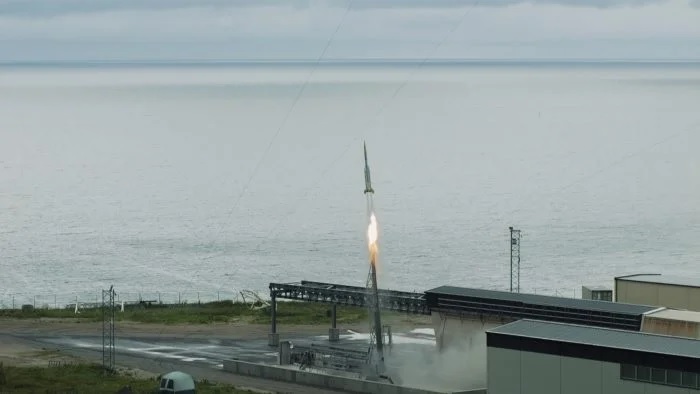Polish Suborbital Rocket ILR-33 AMBER 2K Reaches Space

On July 3, 2024, Polish space technology reached a significant milestone as the ILR-33 AMBER 2K suborbital rocket soared to an altitude of 101 kilometers, officially reaching space. This historic achievement marked the world’s first rocket using 98% hydrogen peroxide as an oxidizer, setting a new precedent for eco-friendly propulsion in space exploration.
The successful launch, which took place at the Andøya Space Sub-Orbital site in Norway, was the culmination of a rigorous series of tests and preparations by engineers from the Łukasiewicz – Institute of Aviation. The launch at precisely 13:09 PM was the latest and most triumphant in a series of efforts aimed at proving the viability of the ILR-33 AMBER 2K rocket. This mission was particularly notable not only for its technical achievements but also for the collaborative efforts involved. The Polish Space Agency played a crucial role as a financial co-contributor, demonstrating the synergy between various national organizations in advancing Poland's presence in space technology.
Dr. Eng. Paweł Stężycki, the director of the Łukasiewicz – Institute of Aviation, expressed immense pride in the project. "We are proud of the fact that a project of creating a Polish suborbital rocket, inaugurated by the late professor Piotr Wolański, in which hydrogen peroxide with a concentration of 98% was used as a rocket propellant, celebrates international success. Reaching an altitude of 101 km by ILR-33 AMBER 2K is a breakthrough event in the history of Polish science and the achievements of Polish engineers in the field of space technologies," he said. This success not only underscores the innovative capabilities of Polish scientists but also highlights their pioneering efforts in incorporating sustainable development principles into space technology.
The ILR-33 AMBER 2K's journey to this milestone was marked by systematic improvements and upgrades. Enhancements included larger solid rocket boosters, a hybrid motor with an extended operating duration, and extensive launch infrastructure like the WR-2 mobile suborbital rocket launcher. These modifications were crucial in achieving the record-breaking altitude, demonstrating the project's continuous evolution and refinement.
Dr. Eng. Adam Okniński, director of the Space Technologies Center at the Łukasiewicz – Institute of Aviation, emphasized the broader implications of this achievement. "Thanks to the tests in Norway, we have proven that the ILR-33 AMBER 2K rocket is a complete and mature technical solution. The consistent implementation of the AMBER program means that today we have qualified staff and research facilities necessary to develop complex space systems, not just components or subsystems," he stated. This achievement paves the way for Poland to develop launch vehicles capable of carrying small satellites into low Earth orbit, providing independent access to space for both civilian and military applications.
The successful organization of this foreign mission was no small feat. It took nearly six months of meticulous planning and coordination. The team had to manage the logistics of transporting not only the ILR-33 AMBER 2K rocket but also the WR-2 mobile launcher, avionics systems, and other essential infrastructure from Warsaw to Norway, a journey of almost 2,000 kilometers. This endeavor required obtaining the necessary export permits and ensuring the safe, specialized transport of all components.
MSc. Eng. Michał Pakosz, head of the Rocket Technology Department and the ILR-33 AMBER 2K program, highlighted the logistical challenges, stating, "Organizing all logistics required transporting not only the ILR-33 AMBER 2K rocket, which is a technology demonstrator, but also the WR-2 mobile launcher, avionics systems, infrastructure supporting facility integration, and propellants. It was necessary to obtain appropriate export permits and provide safe, specialized transport."
The ILR-33 AMBER 2K is not just a remarkable technical achievement but also a symbol of Poland's growing capabilities in space technology. It stands out as the world’s first rocket to use hydrogen peroxide with a concentration of 98% as a propellant. This eco-friendly propellant, commonly found in much lower concentrations in everyday products like hydrogen peroxide (3%) and industrial bleach (30%), offers promising prospects for long-term space missions and satellite platforms.
As Poland celebrates this historic milestone, the ILR-33 AMBER 2K suborbital rocket's success signifies a new era in the nation's space exploration endeavors. With continued advancements and international collaborations, Poland is poised to become a significant player in the global space industry.


